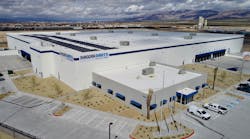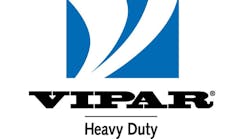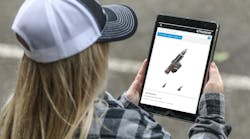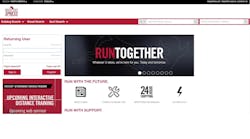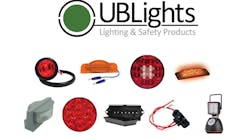Their use in California will soon be more than a suggestion, so they're no longer just an accessory.
The age of the trailer side skirt has arrived.
The California Environmental Protection Agency's Air Resources Board (CARB) requirement that tractors with 53-foot or longer trailers operating in the state be equipped with aerodynamic technologies goes into effect January 1, 2013. But the impact is coming even faster — if large fleets (21 or more trailers) want to take advantage of a five-year phase-in period, they've got to submit a report to CARB and start implementations in 2011.
Starting with the 2011 model year (in effect, beginning Jan 1, 2010), 53-ft or longer box-type trailers must be verified by the US EPA's SmartWay program or be retrofitted with SmartWay technologies — including low rolling resistance tires, side skirts, and cab fairings.
The regulations are driven by desires to reduce truck emissions, but this is a case of a regulation promising to deliver something to those who have to comply with it as well: fuel savings.
“Before our first sale was ever made, we worked hard to prove the theory of trailer side skirt aerodynamics and fuel economy improvements,” said Sean Graham, president of Seattle WA-based trailer-skirt maker Freight Wing Inc. “We learned quickly that the trucking industry is rightfully skeptical of new fuel-saving products, and the importance of having devices validated by independent third parties using testing procedures developed by TMC. Our ‘Aeroflex’ skirt has demonstrated up to a 7% reduction in fuel consumption using the J1321 Joint TMC/SAE Fuel Consumption Test Procedure Type II, which was conducted by the 2008 ‘Energotest’ at the Transport Canada Motor Vehicle Test Center. In the real world, we're seeing that translate to a 4% to 6% improvement for our customers depending on their operations. That results in a fast return on investment, in as soon as 50,000 miles of trailer operation.”
One of those real-world fleets verifying the aerodynamic performance of trailer skirts is Gordon Trucking of Pacific WA. “Fleets are always looking for ways to control fuel costs, especially as fuel prices increase and fuel surcharge lags behind,” said Kirk Altrichter, vice-president of maintenance at Gordon Trucking. While the company, which runs 1,700 power unit, is open to new technology and fuel savings devices, “they have to prove themselves in our fleet operations,” Altrichter said.
Gordon Trucking was an early adapter of trailer skirts, outfitting 2,200 trailers with Freight Wing side skits. It was impressed enough with the results to install another 2,000 sets. “During our testing, we saw a 0.3 mile per gallon improvement, and that gives GTI a payback of less than 18 months,” Altrichter said.
Actually, the ROI is even better than that. The original number was calculated when diesel fuel was at $3.25 a gallon. At $3.80 for diesel as a benchmark price, GTI figures side skirts will save it about $2.2 million a year in fuel costs.
With Freight Wing side skirts, Altrichter said Gordon Trucking expects a 10-year life cycle because of the quality of construction and brackets that allow the skirts to flex.
Trailer manufacturers are paying attention to the trends, offering side skirts both as original equipment and after-market parts and partnering with makers of side skirts.
“Really the major impetus is the requirement that you have to have them to run in California,” said Dave Gilliland, vice-president of branch operations at Great Dane Trailers. “That's the driving force even for those not realizing the fuel savings.”
Graham said most companies that try skirts are quickly convinced of the benefits, and consequently his company's sales have tripled over the past year.
The future of side skirts hinges on both their performance and the regulatory climate. So far, California is the only state to mandate the use of such equipment. “There is a tendency for other states to follow California,” said Gilliland.
With federal mandates on minimum fuel economy and limited carbon dioxide emissions coming later this decade, the trucking industry will be looking for more ways to reduce fuel consumption, Graham said. For his part, Graham's goal is to achieve a 15% improvement in fuel economy over trailers without fairings.
That's a 6% improvement over what's commercially available now through side skirts and gap fairings (which Freight Wing also makes).
It is all but certain that in the future, aerodynamics will play a key role in the evolution of trailers. But, in the here and now, products are available to streamline air, and cut fuel bill through side skirts. With a payback and ROI that can be measured in months, not years, trailer skirts are quickly becoming a common sight on the Interstates.


